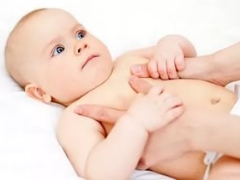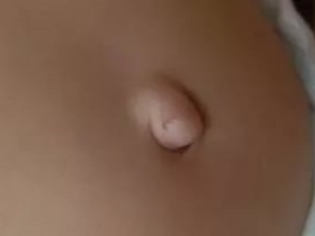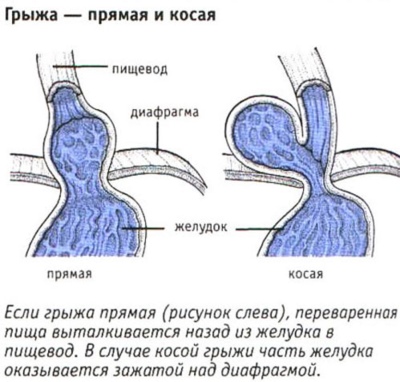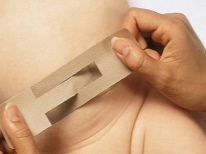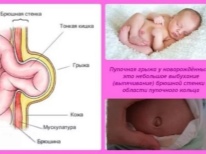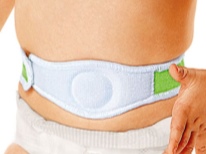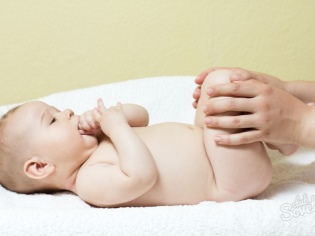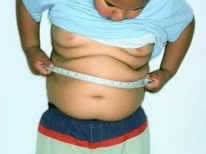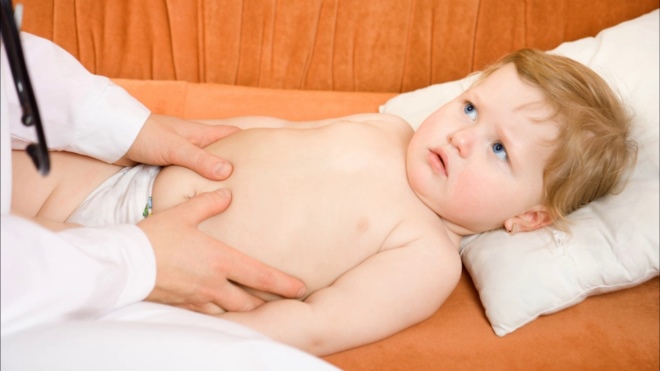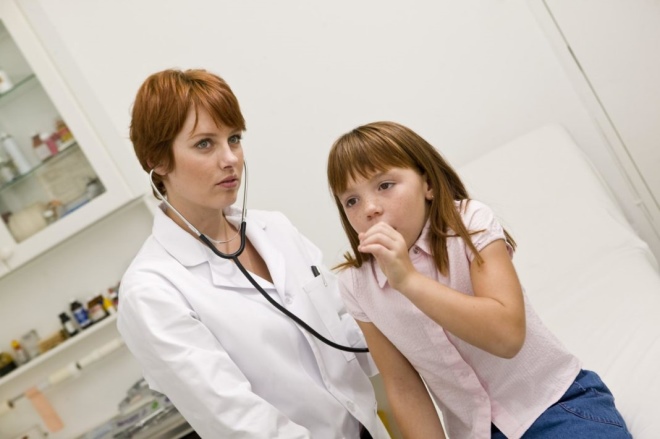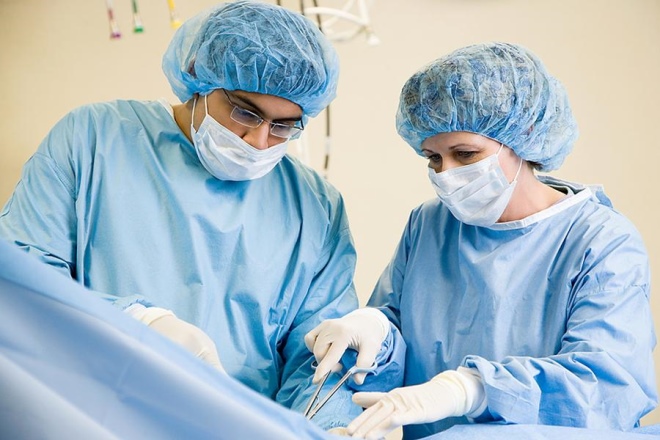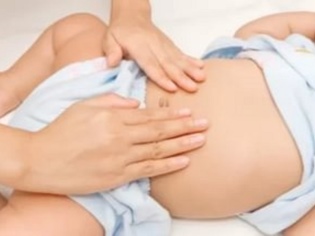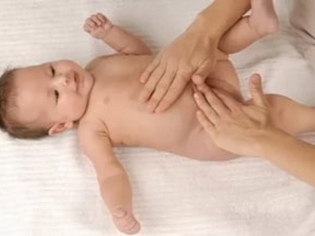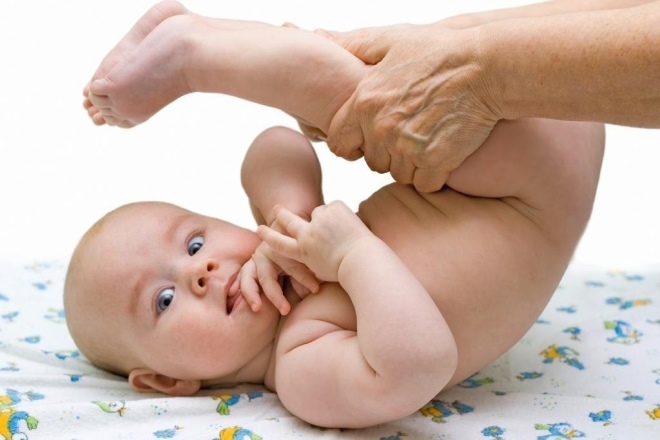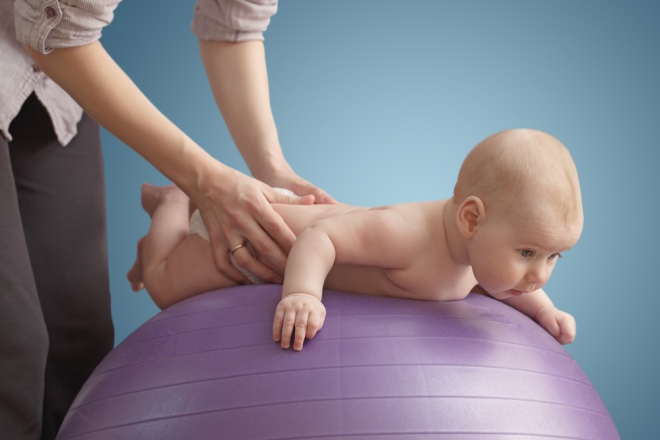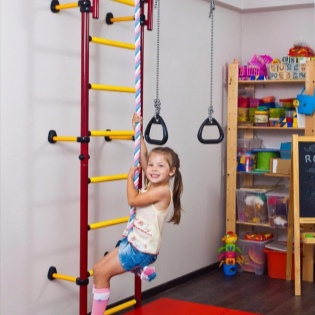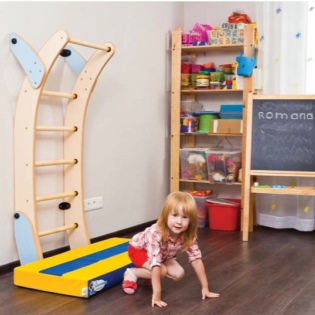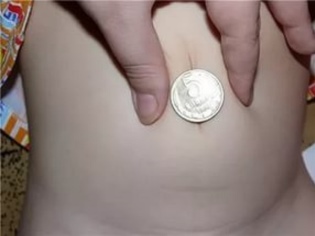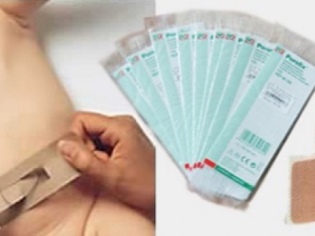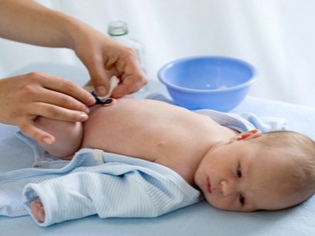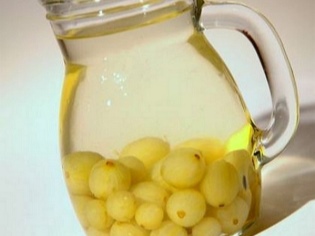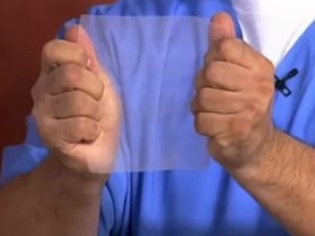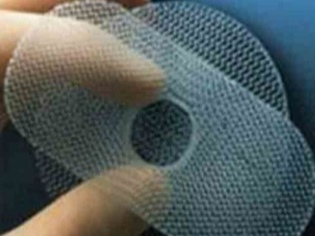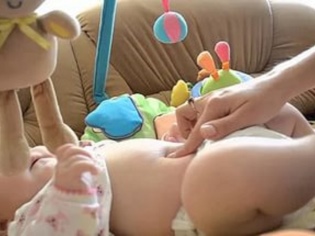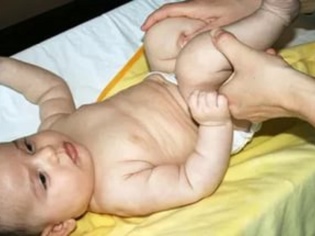Symptoms and treatment of umbilical hernia in children
Umbilical hernia in children is a fairly common phenomenon, especially in the first year of life. How it is dangerous, how to recognize this pathology in a child and how to treat it, we will tell in this article.
What it is
An umbilical hernia is an extension of the internal organs beyond the abdominal cavity through the umbilical opening. The umbilical cord during pregnancy provides a close relationship of the child with the mother, nourishes the baby, provides him with oxygen and everything necessary for development. When the little one was born, and he had his own pulmonary respiration, the ability to eat through the mouth, there is no more biological need in the umbilical cord.
It is cut off in the delivery room, tied or pinned at the cut-off point with a special clothespin (at the discretion of the obstetrician). Ideally, the umbilical cord, part of which remains inside the baby’s tummy, should be covered with dense connective tissue for about 30 days. By the end of the neonatal period, the navel should heal.
However, in practice, not everything is so rosy - quite often it happens that the cord does not fully grow, the formation of connective tissue is too slow, and this causes a hernia to develop. There are other reasons for this pathology - from congenital malformations of the abdominal wall to the inept and illiterate actions of the obstetrician when cutting the umbilical cord. At a later age, the prerequisites for the appearance of a hernia are completely different - more traumatic.
The prevalence of the problem is extremely wide. According to statistics, every third premature baby suffers from navel hernia in varying degrees.
Among the children who came into being at the appropriate time, the problem is found in about 20% of tots. In about 4% of children, the hernia remains up to 6-7 years.
Kinds
All umbilical hernia can be divided into congenital and acquired. In the first case, the doctors suggest that the problem began long before the appearance of the crumbs into the world, even during the period of intrauterine development. These are various umbilical cord pathologies and abnormally formed abdominal wall.
Acquired hernias are oblique and straight. Straight hernias are associated with changes in the fascia in the umbilical region. This leads to the exit of the hernia immediately through the umbilical ring. With oblique hernia, the path is slightly longer - the hernial nodule itself does not appear on the navel, but adjacent to it, often between the thinning wall and the transverse fascia and the white line of the abdomen. And only after that the hernial sac appears in the umbilical ring.
Depending on the complexity of the pathology of the hernia are divided into those that can be set right, and those that are not subject to mechanical stress. Complicated hernias often lead to infringement of the hernial sac, acute pain.
Causes
Children who were born with a hernia, in the opinion of the majority of modern physicians, underwent intrauterine suffering. The cause of congenital hernia can be a violation of the formation of the peritoneum at the cellular level, this can occur during fetal hypoxia, in some genetic diseases.
A newborn may be diagnosed with this because the umbilical ring grows too slowly after cutting the umbilical cord.As a result, an empty space is formed in the supra umbilical region or directly below the navel, where, when the abdominal muscles are tense (for example, with strong crying), a bowel loop can escape.
Have newbornsBy the way, there are many risk factors for hernia:
- private loud cry;
- constipation;
- increased gas formation;
- hereditary weakness of the umbilical ring;
- acute and chronic respiratory diseases associated with the occurrence of severe cough.
In older children, hernia may appear due to weight lifting, weakness of the abdominal muscles. Very often, the parents themselves provoke the appearance of hernias after 1 year by the fact that they put the child on their feet too soon and place them in various verticalizing devices like jumpers and walkers. As long as the abdominal muscles are not ready for a vertical load, the child should crawl, this is how it strengthens the back and the tummy, and only then stand up. If the nature of the prescribed sequence of development is disturbed, often after a year there are signs of a growing hernia.
In children 6–7 years old and older, the appearance of a hernia can be affected by obesity, as well as scars that occur on the abdomen as a result of surgery. A strong, prolonged cough increases the chances of a child getting a hernia at any age. Increased physical activity, especially after a long period of lack of physical training, also trigger the starting mechanism for the formation of abdominal hernia.
Symptoms and signs
Almost all babies have a navel sticking out. Someone more, someone less. By itself, a sticking and strong protruding navel in a baby cannot be considered a hernia. Therefore, a hernia, like a well-defined pathology, has its own clinical symptoms, among which the protrusion of the navel is not the main symptom.
Severe embryonic malformations of the peritoneum, which are accompanied by large sized hernial sacs, which sometimes come from several internal organs (liver, intestines), are noticeable during pregnancy. A specialist who will make a planned ultrasound to the future mother will definitely pay attention to them. Such children are considered practically unviable. They rarely live up to 3 days in resuscitation, although individual positive outcomes are still known to medicine. Most often, a fetus with such a hernia has a serious genetic disease.
Hernia, which a healthy baby acquires after its birth, for example, in the neonatal period, rarely bother him. They are much more concerned about his relatives. The kid does not feel much pain. The nodule itself is small in size - from 1 to 5 centimeters in diameter, and it only “shows up” when the child shouts, cries, or is strained by constipation or intestinal colic. When a child is calm, asleep, relaxed, the bulge goes away, becomes invisible.
One of the initial symptoms of the development of a real abdominal hernia in a child is some swelling in the area of the umbilical ring. At first, it is easy to right back his finger, but then, as the adhesions appear, the reduction in position becomes difficult, if not impossible. The presence of a hernia does not affect the child’s behavior, it does not worsen sleep, appetite, or stool. Attempts to write off the child’s colic, constipation and moodiness for the presence of an umbilical hernia do not hold water. After all, they scream, act up and suffer from the stomach, especially in rain or snowfall, 90% of all children - with and without hernia.
A symptom such as nausea, which is often attributed to abdominal hernia in children of the first year of life, is no longer associated with this pathology, but with the banal overfeeding of a child. The work of the gastrointestinal tract hernial sac in a child does not affect, if it did not occur pinching. It is always an emergency, but fortunately, pinching happens very rarely in childhood.
In most babies from 1 month to 1 year, the hernia goes away on its own, as the abdominal muscles grow and strengthen. A hernia acquired at a later age (at 5.7.10 years) needs more thorough examination and selection of a surgical treatment method. For these children, mild nausea, a tendency to constipation, is an indirect symptom of the development of a hernia. The main way to cope with illnesses in older age is surgery, since other methods are considered ineffective.
Danger
Hernia in the umbilical and umbilical space is dangerous only because it can cause injury to the internal organs that fall into the hernial bag. Most often this is an intestinal ring. As already mentioned, such a risk in young children is considered minimal. But in children older it rises.
Signs of infringement are:
- severe, sudden, acute, almost unbearable pain in the area of the hernia with a spread to the entire tummy;
- severe nausea, frequent vomiting;
- the child has a feeling of distention in the abdomen, the discharge of gas is difficult or absent;
- pronounced blood impurities may be visible in fecal masses;
- the hernial sac looks inflated, strained, changes its color to darker. If the child is put in a horizontal position, the hernia does not “go away,” as usual, but continues to remain outside.
Infringement usually occurs in cases where the hernial ring is narrow. In children with a wide hernial ring, the acute condition usually does not reach. In any case, symptoms suggesting that a hernial sac may be strangled cannot be ignored. Parents should lay the child on its side, call an ambulance and take the child to the surgical department of the nearest children's hospital.
More than 95% of babies at this age have hernia successfully “set back” on their own, but there are also difficult cases. It is clear that waiting should not be synonymous with inaction. In addition to regular visits to the surgeon for the purpose of intermediate monitoring of the hernia, parents will be given other recommendations that it is desirable to strictly follow.
It is strictly forbidden to give him a lot of drinking, try to relieve the pain with any painkillers, apply a warm water bottle or cold to the stomach. And it is not at all worth trying to correct the hernia back on its own. This can happen. More precisely, parents will think that everything turned out. After all, the hernia visually disappears, and the pain subsides. In fact, it can go into the intermuscular space, and when the pain returns, the surgeon will be able to detect signs of peritonitis, necrosis of a part of the intestines, and other very undesirable problems.
Diagnostics
The diagnosis can pediatric surgeon. With their suspicions of a hernia, parents should apply to this specialist. He will carefully examine the baby's navels, probe him, read a medical card, ask many questions about the course of pregnancy, the puerperal features of the healing of the umbilical wound.
If a child, by virtue of age, is able to cough at the request of the doctor, then such a test will also be included in the initial examination. An experienced surgeon will be able to determine the hernia and its approximate characteristics even by touch, but in order to make an accurate diagnosis and make a decision about treatment, it will take several more studies. First, parents are given direction on an ultrasound scan of the abdominal cavity. This diagnosis allows you to confirm the presence of a hernia, to determine its size, the exact location of the dislocation. Then you may need radiography of the abdominal cavity and irrigoscopy. To carry it out, a enema is injected into the intestine with a contrast solution, which allows you to see all the intestinal sections on the finished X-ray image and determine if there are defects in the hernia, perforation, adhesions and other complicating factors.
Sometimes the child is shown endoscopic examination of EGD.Be sure to have to pass the traditional blood and urine tests for general clinical research.
Treatment
Surgery to remove a hernia is considered the main and most effective method of treatment. But for children, things are not so simple. Since the hernia can still regress itself, usually without the urgent need of children, the babies are not sent to the operating table. Acute need is considered pinched hernial sac. According to the established practice, the waiting tactics are most often chosen. If up to 5 years in a child the hernia has not retracted, then an operation can be performed.
More than 95% of babies at this age have hernia successfully “set back” on their own, but there are also difficult cases. It is clear that waiting should not be synonymous with inaction. In addition to regular visits to the surgeon for the purpose of intermediate monitoring of the hernia, parents will be given other recommendations that it is desirable to strictly follow.
Parenting
The best exercise, which is shown to absolutely all babies since birth - is putting it on the tummy every day. Do it better for 10-20 minutes before a meal, so as not to provoke regurgitation. It should not be laid out on a soft sofa or parental bed, but on a hard, flat surface. This exercise not only allows the baby to learn how to hold the head faster, but also effectively strengthens the abdominal muscles, including the obliques. And also contributes to a more rapid discharge of gas from the intestine and reduce the intensity of intestinal colic.
The first laying out on the tummy should not exceed 2-4 minutes, then the time is increased and the procedure is gradually adjusted to 15-20 minutes. Older children are recommended a special, toning abdominal muscle massage.
- Massage. Massage does not require special medical skills, all parents without exception can master its technique. For infants, the procedure can be started immediately after the umbilical wound heals and dries, usually by 1 month. Massage movements should be carried out with the thumb, making circular movements around the navel in a clockwise direction.
Older children can complicate the massage by adding a massage to the oblique abdominal muscles, following their anatomical paths from the bottom up (from the pubis to the ribs) with the index and middle fingers, as well as making horizontal movements in the supra umbilical region. Children from a year of massage do with the use of the same techniques, only add to the manipulation of light tapping movements with the tips of the fingers on the abdomen in the area of the press.
- Bandage. Special devices - bandages for umbilical hernias are used both as a means of conservative therapy and in the postoperative period. The bandage allows you to hold the muscles of the peritoneum in the correct fixed position. Due to a small constant pressure on the area of the hernial sac bulging, a state is reached in which the exit of the bag through the hernia gate becomes impossible.
Children's bandage is different from an adult, it is made of soft elastic tape, which is worn on a naked body. Average sizes for children: 42-54 cm in length and 5 cm in width. The bandage can begin to be worn immediately after the umbilical wound heals. The device can not be used for severe skin lesions in the abdomen (for example, atopic dermatitis, eczema, chickenpox or measles during an illness, when there is a rash on the abdomen). For hernias of small size, the bandage is considered the most effective method of conservative therapy. Wearing it must be coordinated with the surgeon observing the child.
- Gymnastics. Gymnastics can begin to do after the crumbs 1 month old. For the smallest, it must necessarily include coups from tummy to side, from back to side. From 3 months you can do the same coups, but also in the opposite direction.To turn the baby, you need to pull it by the right hand to the left, then there will be a revolution on the left flank. Another great exercise - pushing the legs to the stomach. They should be let down, held for about 30 seconds, then brought down and straightened alternately.
Children older than six months is useful to hold on fitball. Crawling should be encouraged, since it is with him that the tummy muscles develop the most anatomically correct. Occupations with a crossbeam in a prone position are useful.
For children under 5 years of age with an established diagnosis of abdominal umbilical hernia, it makes sense to install a wall in the children's room and teach it to properly strengthen the abdominal muscles. To do this, use the exercises "Corner" (legs at right angles to the stomach in a hanging position on the crossbar) and Pendulum (swinging the body in a hanging position on the crossbar).
Treatment of folk and non-traditional means
Since up to 5 years, doctors are trying to wait for the development of events, various clinics that offer unconventional treatment of children's problems for a completely traditional national currency are beginning to feel most at ease. Parents who are trying in every way to prevent an operation are ready to do anything. And now their tiny massage is done by a specialist in the field of energy massage and takes a lot of money for it.
If you look closely, the tummy is massaged in the same way as any mother does at home, and, from this point of view, nothing new happens for the child. It is good if the specialist does not harm, but sometimes it happens and exactly the opposite. Traditional medicine and grandmothers methods of getting rid of the baby from such an unpleasant "sore" are few and well known. It’s difficult to talk about their benefits, it’s a question of faith in a miracle, but it’s necessary to say what can be potentially dangerous:
- Piglet on the navel. The advice to tie or glue a five-ruble coin to the baby's umbilical ring using a plaster can be heard not only from the lips of a grandmother or neighbor, but also from a local pediatrician, especially if the doctor himself is at the age of a grandmother and studied in a medical university for a very long time. Modern doctors have not found any benefit from the coin on the navel. If the hernia exists only in the understanding of the parents, then there is no point in the patch at all, and if the hernia is real, then the patch is weak.
But what really happens sometimes is the development of local inflammation in the navel, infection of the navel with bacteria, prickly heat. In addition, the hernia itself does not bother the baby, but a coin glued to the delicate skin can deliver many unpleasant minutes.
- Patch. There is nothing wrong with this method, and it does allow you to maintain the navel and hernial sac, if it has one, in a fixed, correct state. There are two nuances, compliance with which will ensure successful treatment. First, the patch should be good (it is better to take the products of manufacturers that make high-quality sterile plaster for use in surgical hospitals or a special children's hypoallergenic Porofix, "Chikko."
Secondly, the surgeon must apply the patch to the child only. Independent attempts by initiative parents to right-hand a hernia can end very badly — pinching the intestinal ring and the need for an urgent operation. It is correct to entrust the first imposition of a doctor, ask him to show and explain the process, then to change the plaster on the navel independently without the risk of injuring the child. The navel sealed with plaster should be shown to the doctor at least twice a month. If the hernia begins to grow in size, its presence under the plaster becomes dangerous to the health of the baby.
- Ointments and compresses. The recipe of homemade ointment, which is very popular with the connoisseurs of traditional medicine, should be applied overnight on the navel area, includes butter, propolis tincture and iodine. A mixture of oil and propolis, the navel is smeared, a compress is applied, and then the next morning they make an iodine grid around the hernia. On how the oil acts on the hernia, official medicine is silent because there are no cases of healing with oil and propolis.
However, propolis, and even more so its alcoholic tincture, can cause a serious allergic reaction in a baby, which will require the most genuine traditional treatment. And the frequent imposition of iodine reticulum leads to a very serious condition - an overdose of iodine, because children's skin, delicate and sensitive, absorbs it completely.
- Broths and drinks. Traditional medicine is ready to offer a lot of recipes for making decoctions and tinctures made from rhubarb, a shepherd's purse and other herbs and roots against hernia. It is difficult to discuss such treatment seriously, since it is strange to expect that the hernia will retract and resolve after ten days of drinking herbal decoction.
- If you want to water the child with herbs, you can and water. But be sure to agree on a set of herbs with a pediatrician, because many medicinal plants are quite strong allergens. Also, do not expect such a "treatment" of a miracle. It will not happen.
Surgical intervention
After 5 years, if the signs of the hernia have not disappeared, it exceeds 1.5 centimeters in size, if there is a tendency to increase and increase the hernia sac, if there is a high risk of pinching due to the narrow hernia gate, the decision is made to remove hernia surgically. The operation is called "hernioplasty". With such surgical manipulation, the excised sac is replaced either with a fragment of the body’s own tissues, or a mesh implant is inserted, which takes the strain on itself and minimizes the chance of hernia recurring.
For this reason, the best method for children is the method of non-tensioned hernioplasty, in which special implantable nets are used. During surgery, the surgeon will not necessarily excise the hernia. If its reposition is possible and it is possible to fix it in a natural position in the right place, then there is absolutely no need to remove it.
The mesh implant can be installed both above the umbilical ring and under it, it depends on the size of the hernia gate. The final stage of the operation is always closure of the hernial ring. Quite often in recent years with an uncomplicated hernia, such operations are performed using laparoscopy. This minimizes the traumatic impact, helps to recover faster. Operations on excision and reposition of hernial sacs are carried out using modern technologies, for example, with a laser.
For surgery, you can use any kind of anesthesia and this is a great advantage in treating children. By the way, not all surgical hospitals practice this kind of operations for patients in childhood, there are doctors - followers of the tension surgery. But this question, in any case, parents should discuss with their doctor in preparation for the intervention.
Postoperative period and rehabilitation
If the child underwent surgery with a tension method, without mesh implants, the recovery period will be longer. It can take from 1 month to six months. Physical loads will be contraindicated for the child. The risk of recurrence with this intervention is significantly higher than with surgery using an implant. In the case of non-tensioned hernioplasty, the rehabilitation is less long. After 3-4 weeks the child will be able to do the usual things without restrictions, he will be able to attend the sports sections. And the probability of relapse after such an intervention is estimated at no more than 1%.
For children who have undergone an umbilical hernia, it is important to follow a proper diet that will not cause increased gas formation. From the diet you need to temporarily eliminate cabbage, peas, carbonated drinks, kefir. In case of constipation, these children should be given a mild laxative allowed for use by age. Do not do enemas and wait until the child goes to the toilet on their own.
In the first week after surgery you should not give solid and thick foods to boys and girls. It is advisable to cook porridge, mashed potatoes, jelly, compotes. Gradually expanding the diet can only be at the end of the first week. Children are encouraged to wear a bandage, as well as massage and gymnastics, as mentioned above. Older children should definitely go in for sports.
Recommendations
- For the prevention of umbilical hernia, for its treatment, if the diagnosis takes place to be, as well as in the framework of rehabilitation after surgical treatment, the child is recommended to go swimming. In the pool you can write a child from 1 month, now there are such groups for the tiniest swimmers. Swimming contributes to the most rapid strengthening of all muscle groups, especially the abdominal muscles of the sides.
- For the prevention of hernia in children in the neonatal period Some pediatricians do not recommend tight swaddling.
- Favorite fun dads "we fly-fly" with tossing a child up, at the time of tossing a child, it is possible to increase intra-abdominal pressure, which contributes to the appearance of a hernia in a child prone to such a pathology.
- Abdominal hernia can only be treated surgically. And because it is easier and easier to prevent, in time following all the recommendations of the doctor, from childhood strengthening the abdominal muscles.
You can also listen to useful tips from a professional doctor on the video below.
